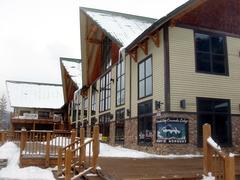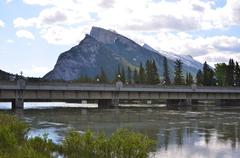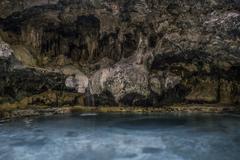
Mount Norquay Visiting Hours, Tickets, and Travel Tips
Date: 19/07/2024
Introduction
Nestled in the heart of Banff National Park, Alberta, Canada, Mount Norquay is a beacon of historical, cultural, and ecological importance. This iconic mountain, named after Manitoba’s Premier John Norquay, has evolved from its early Indigenous roots to become a premier destination for outdoor enthusiasts and history buffs alike. The mountain and its surrounding areas were traditionally inhabited by the Stoney Nakoda, Ktunaxa, and Blackfoot peoples, who utilized the land for hunting, gathering, and spiritual practices. With the establishment of Banff National Park in 1885, Mount Norquay quickly became a popular destination, attracting hikers, climbers, and nature enthusiasts due to its accessibility and stunning views. Today, it offers a range of activities, from skiing and snowboarding to summer hiking and wildlife viewing, making it a year-round attraction. This guide provides a comprehensive overview of Mount Norquay’s rich history, visitor information, and travel tips to help you plan an unforgettable visit. Whether you’re drawn to its rich Indigenous heritage, historical significance, or modern recreational activities, Mount Norquay offers something for every visitor (Banff Norquay Ski Resort, Banff National Park History, Indigenous Peoples and Banff National Park).
Table of Contents
- Introduction
- Early Indigenous Presence
- European Exploration and Naming
- Development of Banff National Park
- Skiing and Winter Sports
- Modern Attractions and Activities
- Visitor Information
- Environmental and Cultural Significance
- Notable Events and Milestones
- Conclusion
- FAQ
Early Indigenous Presence
Mount Norquay and its surroundings were traditionally inhabited by the Stoney Nakoda, Ktunaxa, and Blackfoot peoples. These Indigenous groups utilized the land for hunting, gathering, and spiritual practices. The mountain and its surrounding areas were integral to their way of life, providing resources and serving as a site for cultural and spiritual activities.
European Exploration and Naming
The first recorded European exploration of the Banff area occurred in the early 19th century. David Thompson, a British-Canadian fur trader, surveyor, and map-maker, was among the first Europeans to document the region. However, it wasn’t until the late 19th century that Mount Norquay received its name, honoring John Norquay, the Premier of Manitoba from 1878 to 1887. Norquay was a prominent figure in Canadian politics and played a significant role in the development of Western Canada.
Development of Banff National Park
Established in 1885, Banff National Park is Canada’s oldest national park and the third oldest in the world. The discovery of hot springs in the area spurred the creation of the park, attracting tourists and leading to the development of infrastructure by the Canadian Pacific Railway (CPR). Mount Norquay quickly became a popular destination within the park, attracting hikers, climbers, and nature enthusiasts. The mountain’s accessibility and stunning views made it a favorite among early tourists.
Skiing and Winter Sports
The history of skiing on Mount Norquay dates back to the early 20th century. In 1926, the Banff Ski Club was formed, and the first ski trails were cut on the mountain. The development of skiing infrastructure continued throughout the 1930s, with the construction of the first ski lodge in 1929 and the installation of a rope tow in 1941. These developments made Mount Norquay one of the first ski resorts in Canada. In 1948, the first chairlift was installed, significantly improving access to the slopes and attracting more visitors. The resort continued to expand, adding new runs and modernizing its facilities.
Modern Attractions and Activities
Today, Mount Norquay is a year-round destination, offering a range of activities for visitors. The ski resort remains a central attraction, with over 60 runs catering to skiers and snowboarders of all levels. In addition to skiing, the resort offers snow tubing, snowshoeing, and other winter sports. During the summer months, Mount Norquay transforms into a hub for hiking, climbing, and wildlife viewing. The Via Ferrata, a guided climbing experience, has become a popular activity, providing visitors with a unique way to explore the mountain’s rugged terrain.
Visitor Information
- Visiting Hours: The resort operates year-round with varying hours depending on the season. Check the official website for up-to-date information on visiting hours.
- Tickets: Ticket prices vary by activity and season. Skiing day passes, season passes, and Via Ferrata tours can be booked in advance on the Mount Norquay Ski Resort website.
- Travel Tips: Dress in layers to accommodate changing weather conditions. Bring sunscreen, water, and a camera to capture the stunning vistas. Consider booking accommodations in advance, especially during peak seasons.
- Accessibility: The resort offers facilities and services to accommodate visitors with disabilities. Contact the resort directly for specific accessibility information and assistance.
Environmental and Cultural Significance
Mount Norquay’s history is deeply intertwined with the natural and cultural heritage of Banff National Park. The mountain and its surrounding areas are home to diverse flora and fauna, including several species at risk. Conservation efforts are ongoing to protect these ecosystems and ensure the sustainability of the park for future generations. The mountain also holds cultural significance for the Indigenous peoples who have lived in the region for thousands of years. Efforts are being made to recognize and honor their contributions and to incorporate Indigenous knowledge and perspectives into the management of the park.
Notable Events and Milestones
- 1926: Formation of the Banff Ski Club.
- 1929: Construction of the first ski lodge on Mount Norquay.
- 1941: Installation of the first rope tow.
- 1948: Installation of the first chairlift.
- 1985: Banff National Park designated as a UNESCO World Heritage Site.
- 2014: Introduction of the Via Ferrata climbing experience.
Conclusion
Mount Norquay is a destination that seamlessly blends history, culture, and outdoor adventure. Whether you’re drawn to its rich Indigenous heritage, historical significance, or modern recreational activities, Mount Norquay offers something for every visitor. Plan your visit today and discover the beauty and history of this iconic mountain in Banff National Park (Banff Norquay, UNESCO, Parks Canada).
FAQ
Q: What are the visiting hours for Mount Norquay?
A: Visiting hours vary by season. Check the official website for current hours.
Q: How much do tickets cost for Mount Norquay?
A: Ticket prices vary depending on the activity and season. Visit the Mount Norquay Ski Resort website for detailed pricing.
Q: What activities are available at Mount Norquay?
A: Year-round activities include skiing, snowboarding, snow tubing, hiking, climbing, and wildlife viewing. The Via Ferrata is a popular guided climbing experience.
Q: Is Mount Norquay accessible for visitors with disabilities?
A: Yes, the resort offers facilities and services to accommodate visitors with disabilities. Contact the resort directly for specific accessibility information.



